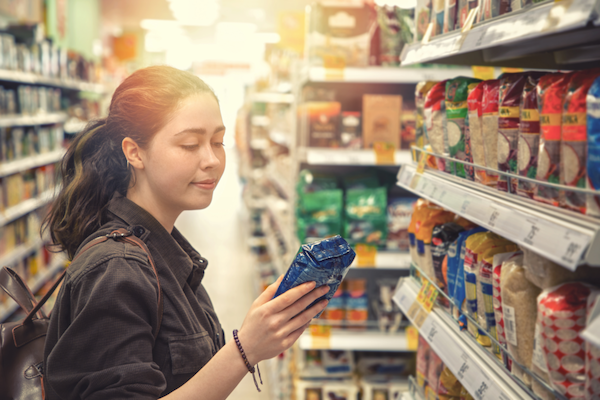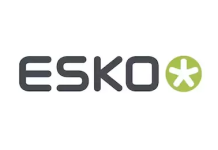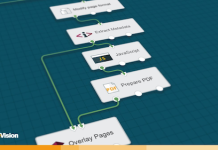What do consumers really think about packaging? Elisabeth Skoda, editor at large at Packaging Europe, and writing for drupa explores this topic.
The last in-person drupa took place seven years ago, and the packaging industry and the world have changed dramatically since then. A pandemic, a global economic crisis, a war in Europe, and the ever more obvious effects of global heating becoming clearer have changed the industry landscape beyond recognition. In this context, how have consumer attitudes towards packaging changed and evolved?
I speak to two industry experts to find out more. Mintel’s recent report, Global Outlook on Sustainability: A Consumer Study 2023 takes an in-depth look at consumers’ shifting values and attitudes towards sustainability.
Focus On Packaging Functionality
Asked about the main priorities consumers have for packaging, the report’s author Richard Cope pointed out that while sustainability is important, other factors, such as the efficacy of the packaging, take higher priority.
‘In our surveys, consumers rated familiarity with the brand and perceived quality of the product as most important. The first packaging topic that came up was product protection at number three, and recyclable and sustainably sourced packaging came fourth.’
He has observed a hardening of the lines over the last three years while doing research for the report. ‘The proportion of people citing packaging efficacy as most important is going up more than the proportion of people asking for sustainable or recyclable packaging. The main focus is on packaging performing its cardinal function, protecting the product inside.’
Nataliya Malhanova, Director Innovation and Marketing Communication Materials Group EMENA at Avery Dennison, underlines the fact that product and packaging should first and foremost fulfil its core function.
‘Only after that comes convenience and ease of use, like with the trend for inclusive packaging design. Sustainability and the impact a product and packaging have on the environment is the final piece of the puzzle. In an ideal scenario, we delight consumers with safe, appealing, functional, easy to use and sustainable packaging.’

Beware Of The Value-Action Gap
When surveyed, people tend to say what they think the interviewer would like to hear, rather than what they actually think. This gap also was very evident when asking consumers about their packaging recycling habits, explained Cope.
‘In our surveys, 88% of people said, for example, that they wouldn’t do harm to the environment, while when asked if they recycled in the last year, that figure drops down to about 55%. The holy grail both for brands, companies and governments is to close this gap.’
Mintel’s report looks at what peoples’ emotional touchpoints are and how to use marketing and information techniques to get people on board.
‘The conclusion from a packaging perspective is that providing clear, contextual information on how to recycle or take action is key. From a marketing point of view, it’s important to remember to tick all the boxes, so that a product is high quality, convenient and performs its primary role. Consumers value sustainability, but it’s important for brands to get the basics right and excel at these before selling into sustainability.’
Linking The Product And The Consumer
The correct labelling can help guide consumers in the right direction when it comes to disposing of the packaging correctly, but Ms Malhanova also believes that it’s important to focus on making sure that packaging is created according to eco-design guidelines, and that the infrastructure is being optimised to collect, sort and recycle different types of packaging effectively.
‘A label is a small, yet significant element of the packaging. It is a great communication channel to reach consumers to explain to them different aspects of sustainable design and to encourage good behaviour rather than confuse or make them feel guilty. For example, why not translate ‘climate neutral’ claim into more meaningful information for consumers, or instead of ‘contains plastic’ message guide consumers on how to best recycle a pack. Let’s empower consumers to work together with us on a sustainable future.’
Packaging and in particular labels are the connecting point between brands and consumers, providing product information and conveying shelf appeal. Smart labels using RFID technology or a printed QR code can also boost consumer interaction with a brand and can even provide traceability and transparency on a product’s carbon footprint.
‘At Avery Dennison, we are currently running pilots to use a smart label as a communication of a proof point of the carbon footprint of a specific product. We use a smart label and our connected platform, Atma.io, to monitor a product’s journey from the source to the consumer. For example, from a label on a wine bottle, the consumer can not only learn about the wine but also the impact this bottle of wine has on the environment,’ she added.
A Differentiated Look At Packaging
A key function of packaging is to attract attention on the shelf. Today, portraying a sustainable image is equally as important to many brands. There has been a noticeable shift towards paper, particularly in the areas of beauty, technology and food.
‘One of the reasons for this is compliance, and companies staying ahead of the game on plastic regulation,’ explained Cope. ‘But there is a broad view from consumers that paper is natural and doesn’t have an impact on the environment.’
In the context of this, it’s important to rely on facts and figures when looking at packaging, and LCAs can play an important role here. Plastic packaging can sometimes fare better when looking at the figures, but still has a bad reputation with consumers. Giving a clearer picture will require communication efforts, explained Nataliya Malhanova.
‘We have been using plastics for many years without paying much attention to how to dispose of it. As a result of this, the amount of plastics in the environment is tremendous, and consumers are aware of this. It is a very emotional topic.’
However, not following the facts and figures can have adverse effects on overall sustainability, when brands are led by consumer perception and not what is objectively the most sustainable packaging.
‘We need bold and courageous brands who choose packaging or design packaging based on eco-design and not on consumer perception. You can satisfy consumer perceptions by choosing paper, but if it doesn’t make sense from eco-design principles, this does more harm than good. Facts and figures can be used to show consumers where it makes sense to use plastic, and where it is better to switch to alternative packaging materials or refill or returnable solutions. Changing consumer perceptions will be difficult, but we need to be bold and do it where it is right.’
Dealing With Complexity
The Mintel report paints a clear picture in showing that the majority of consumers still don’t understand the complexities of packaging, how to dispose of it and how it can be recycled.
‘People don’t necessarily understand that a pack that’s marked as biodegradable or compostable won’t necessarily degrade in the garden, or that not all ocean plastics can be turned into food or beauty grade packaging. We have however observed that a majority understands that plastic wrapping can extend shelf life and that coloured plastics might be more difficult to recycle. A small majority understands that just because something contains recycled content, it can be recycled again. Only a minority realise that liquid cartons and flexible packaging might not be recyclable locally. A lot of work remains to be done, especially since there has not been much progress when we asked the same questions about packaging two years running,’ concluded Cope.
It’s clear that the topic of consumer perception around packaging is complex and multi-layered. Drupa 2024, and in particular touchpoint packaging will explore the topic of packaging as a touchpoint for consumers in depth.
DRUPA
https://www.drupa.com





















